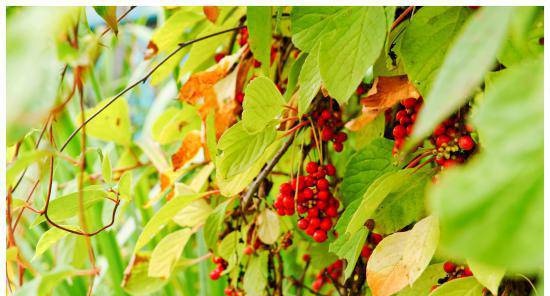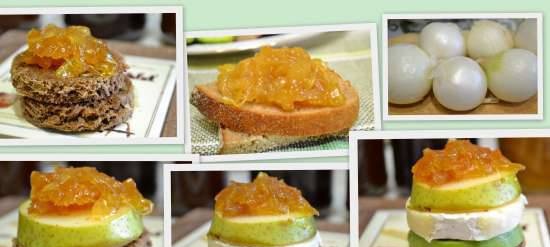|
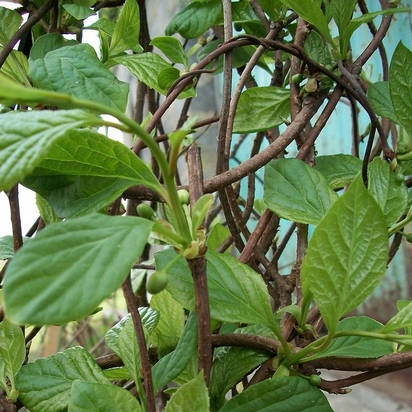 In the Far East, in the cedar and deciduous forests, twining around trees, a unique liana grows, reaching 15 meters or more in these places. In recent years, it has been increasingly found on the plantations of scientific institutions and on the sites of amateur gardeners, ranging from the Far East to the most western outskirts of Russia. In the Far East, in the cedar and deciduous forests, twining around trees, a unique liana grows, reaching 15 meters or more in these places. In recent years, it has been increasingly found on the plantations of scientific institutions and on the sites of amateur gardeners, ranging from the Far East to the most western outskirts of Russia.
If you grind any part of this plant, be it leaves, bark or fruits, you immediately feel the characteristic lemon scent, for which this vine got its name - lemongrass.
Schisandra in the Far East
 In our country, the only species of lemongrass grows - Chinese lemongrass. This plant was known in Chinese medicine almost a thousand years ago under the name UWei Tzu - the fruit of five tastes. The pulp of the fruit is very sour (sour than lemon), the skin is sweet, the seeds have an unpleasant and pungent taste, and the whole fruit is salty, tart and, in general, slightly edible. In our country, the only species of lemongrass grows - Chinese lemongrass. This plant was known in Chinese medicine almost a thousand years ago under the name UWei Tzu - the fruit of five tastes. The pulp of the fruit is very sour (sour than lemon), the skin is sweet, the seeds have an unpleasant and pungent taste, and the whole fruit is salty, tart and, in general, slightly edible.
The extraordinary property of lemongrass fruits, which we now call tonic, has long been known to hunters of the Far East. They dried the berries, preparing them for future use for the whole winter. A handful of such dried fruits allowed them, making do with meager food and not feeling tired, to chase a wild animal for days. In addition, eating them sharpened night vision. Gold hunters talked about this property of lemongrass to Russian botanists at the end of the nineteenth century, later
to the President of the Academy of Sciences Academician V.L. Komarov. In the thirties, medical scientists became interested in the unusually valuable property of lemongrass. In its seeds, schizadrin was found - a substance that has an exciting effect on the human nervous system, somewhat similar to the action of the Brazilian cola nut.
The use of lemongrass
Sugar substances, citric, malic and tartaric acids, protein substances, essential oils, vitamins, pectin were also found in the fruits of schisandra.
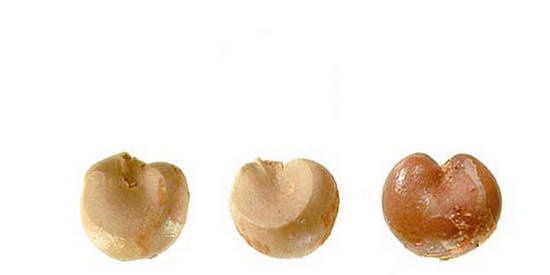 Not only fruits, but also all other parts of this plant have healing properties. Therefore, lemongrass is a culture of complex application and at the same time has not only medicinal, but also nutritional value. Its fruits are used for drying, making jam, marmalade, juice. And from the juice they make kvass, syrups, jelly, which not only restore strength, but also well quench thirst. The seeds are used to obtain tinctures and medicinal powder. Leaves and bark are used to brew tea. Not only fruits, but also all other parts of this plant have healing properties. Therefore, lemongrass is a culture of complex application and at the same time has not only medicinal, but also nutritional value. Its fruits are used for drying, making jam, marmalade, juice. And from the juice they make kvass, syrups, jelly, which not only restore strength, but also well quench thirst. The seeds are used to obtain tinctures and medicinal powder. Leaves and bark are used to brew tea.
Lemongrass is also remarkable as an ornamental plant. Its lianas with glossy foliage are picturesquely decorating gazebos, verandas, walls. In their own way, they are attractive in spring, colored with white or white-pink waxy flowers with a pleasant smell. The liana also looks impressive in the fall, covered with bright orange bunches of fruits.
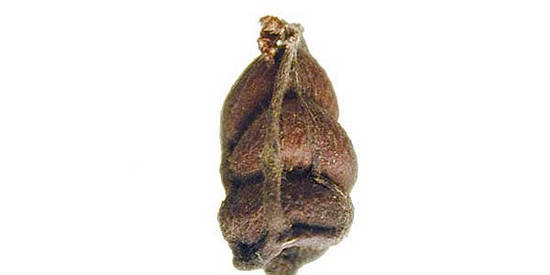 In nature, lemongrass grows along forest edges and clearings, twisting trees, reaching for the sun. That is why it is picky about lighting in culture, and in the shade it grows slowly and bears poor fruit, although at a young age it requires some shading. In open places, lemongrass is usually undersized, spreading, spreads over the surface of the earth, reproduces vegetatively, well forming root shoots and shoots. In nature, lemongrass grows along forest edges and clearings, twisting trees, reaching for the sun. That is why it is picky about lighting in culture, and in the shade it grows slowly and bears poor fruit, although at a young age it requires some shading. In open places, lemongrass is usually undersized, spreading, spreads over the surface of the earth, reproduces vegetatively, well forming root shoots and shoots.
Growing lemongrass
It is most advisable to grow lemongrass in culture - on a trellis.
Formed in the rather humid climate of Primorye, lemongrass is picky about moisture, both soil and atmospheric. For its successful cultivation, a fertile, well-drained soil of light texture, cultivated to a great depth, is required. Lemongrass does not grow in swampy areas. Winter-hardy. Shelter for the winter does not require.
Lemongrass reproduces well by seeds.For spring sowing, seeds need stratification for 80-100 days, but for autumn sowing, such preparation is not required. But there are some difficulties with this method of reproduction. Lemongrass has a highly developed seed emptyness, and although such seeds outwardly do not differ from normal ones, no plants are formed from them. And further. Even viable seeds, and at the same time having passed stratification, not all germinate in the first year.
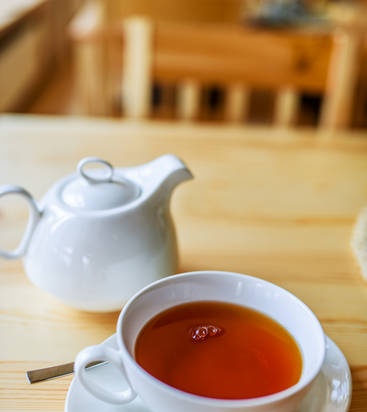 Seedlings begin to bear fruit in the 5-6th year, but individual berries may appear earlier. The average yield of one adult liana is up to 3 kg. But, unfortunately, lemongrass gives good yields approximately once every two to three years. And this is due to some oddities in the development of this vine. Lemongrass is usually dioecious, that is, some plants bear staminate (male) flowers, and therefore end up without a crop, while others, which, unfortunately, are less common, are only pistillate (female). Sometimes there are monoecious vines carrying both types of flowers. But that's not all. Some plants retain their flower type from year to year, while others, which happens more often, turn out to have an unstable flower type over the years. In some years, depending on the conditions during the inception of flower buds, they form staminate flowers, and in others - pistillate. Seedlings begin to bear fruit in the 5-6th year, but individual berries may appear earlier. The average yield of one adult liana is up to 3 kg. But, unfortunately, lemongrass gives good yields approximately once every two to three years. And this is due to some oddities in the development of this vine. Lemongrass is usually dioecious, that is, some plants bear staminate (male) flowers, and therefore end up without a crop, while others, which, unfortunately, are less common, are only pistillate (female). Sometimes there are monoecious vines carrying both types of flowers. But that's not all. Some plants retain their flower type from year to year, while others, which happens more often, turn out to have an unstable flower type over the years. In some years, depending on the conditions during the inception of flower buds, they form staminate flowers, and in others - pistillate.
Currently, in some scientific institutions, work is underway to study the developmental features of this amazing liana, methods for its cultivation in culture are being developed, the most productive seedlings are selected, and among them even the first candidates for varieties have appeared. Amateur gardeners are of great help in introducing lemongrass to culture gurus.
Lemongrass cooking methods

- You can make a dream with sugar from lemongrass. The berries are washed and squeezed out through a gauze bag. Then it is poured into an enamel bowl, sugar is added in a 1: 1 ratio, heated over low heat until the sugar is completely dissolved. The juice is poured into glass jars, covered with lids and stored in a cool place.
- To make jam, the berries are sorted out, steamed, rubbed through a sieve. Sugar is added to the resulting puree (for 1 kg of mashed potatoes, 1.3-1.5 kg of sugar and 100-120 g of apple or hawthorn juice for better gelling) Cook with constant stirring until the boiling point is 105-106 ° C and no crust forms on the surface
- Lemongrass leaves tea has an invigorating effect and quenches thirst well.
In early August, dry lemongrass leaves are prepared, crushed, laid out in a thin layer and dried with natural ventilation.
10 g of dried leaves are poured into 1 liter of boiling water.
Garden calendar
Read now
All recipes
|
 In the Far East, in the cedar and deciduous forests, twining around trees, a unique liana grows, reaching 15 meters or more in these places. In recent years, it has been increasingly found on the plantations of scientific institutions and on the sites of amateur gardeners, ranging from the Far East to the most western outskirts of Russia.
In the Far East, in the cedar and deciduous forests, twining around trees, a unique liana grows, reaching 15 meters or more in these places. In recent years, it has been increasingly found on the plantations of scientific institutions and on the sites of amateur gardeners, ranging from the Far East to the most western outskirts of Russia. In our country, the only species of lemongrass grows - Chinese lemongrass. This plant was known in Chinese medicine almost a thousand years ago under the name UWei Tzu - the fruit of five tastes. The pulp of the fruit is very sour (sour than lemon), the skin is sweet, the seeds have an unpleasant and pungent taste, and the whole fruit is salty, tart and, in general, slightly edible.
In our country, the only species of lemongrass grows - Chinese lemongrass. This plant was known in Chinese medicine almost a thousand years ago under the name UWei Tzu - the fruit of five tastes. The pulp of the fruit is very sour (sour than lemon), the skin is sweet, the seeds have an unpleasant and pungent taste, and the whole fruit is salty, tart and, in general, slightly edible. Not only fruits, but also all other parts of this plant have healing properties. Therefore, lemongrass is a culture of complex application and at the same time has not only medicinal, but also nutritional value. Its fruits are used for drying, making jam, marmalade, juice. And from the juice they make kvass, syrups, jelly, which not only restore strength, but also well quench thirst. The seeds are used to obtain tinctures and medicinal powder. Leaves and bark are used to brew tea.
Not only fruits, but also all other parts of this plant have healing properties. Therefore, lemongrass is a culture of complex application and at the same time has not only medicinal, but also nutritional value. Its fruits are used for drying, making jam, marmalade, juice. And from the juice they make kvass, syrups, jelly, which not only restore strength, but also well quench thirst. The seeds are used to obtain tinctures and medicinal powder. Leaves and bark are used to brew tea. In nature, lemongrass grows along forest edges and clearings, twisting trees, reaching for the sun. That is why it is picky about lighting in culture, and in the shade it grows slowly and bears poor fruit, although at a young age it requires some shading. In open places, lemongrass is usually undersized, spreading, spreads over the surface of the earth, reproduces vegetatively, well forming root shoots and shoots.
In nature, lemongrass grows along forest edges and clearings, twisting trees, reaching for the sun. That is why it is picky about lighting in culture, and in the shade it grows slowly and bears poor fruit, although at a young age it requires some shading. In open places, lemongrass is usually undersized, spreading, spreads over the surface of the earth, reproduces vegetatively, well forming root shoots and shoots. Seedlings begin to bear fruit in the 5-6th year, but individual berries may appear earlier. The average yield of one adult liana is up to 3 kg. But, unfortunately, lemongrass gives good yields approximately once every two to three years. And this is due to some oddities in the development of this vine. Lemongrass is usually dioecious, that is, some plants bear staminate (male) flowers, and therefore end up without a crop, while others, which, unfortunately, are less common, are only pistillate (female). Sometimes there are monoecious vines carrying both types of flowers. But that's not all. Some plants retain their flower type from year to year, while others, which happens more often, turn out to have an unstable flower type over the years. In some years, depending on the conditions during the inception of flower buds, they form staminate flowers, and in others - pistillate.
Seedlings begin to bear fruit in the 5-6th year, but individual berries may appear earlier. The average yield of one adult liana is up to 3 kg. But, unfortunately, lemongrass gives good yields approximately once every two to three years. And this is due to some oddities in the development of this vine. Lemongrass is usually dioecious, that is, some plants bear staminate (male) flowers, and therefore end up without a crop, while others, which, unfortunately, are less common, are only pistillate (female). Sometimes there are monoecious vines carrying both types of flowers. But that's not all. Some plants retain their flower type from year to year, while others, which happens more often, turn out to have an unstable flower type over the years. In some years, depending on the conditions during the inception of flower buds, they form staminate flowers, and in others - pistillate.
